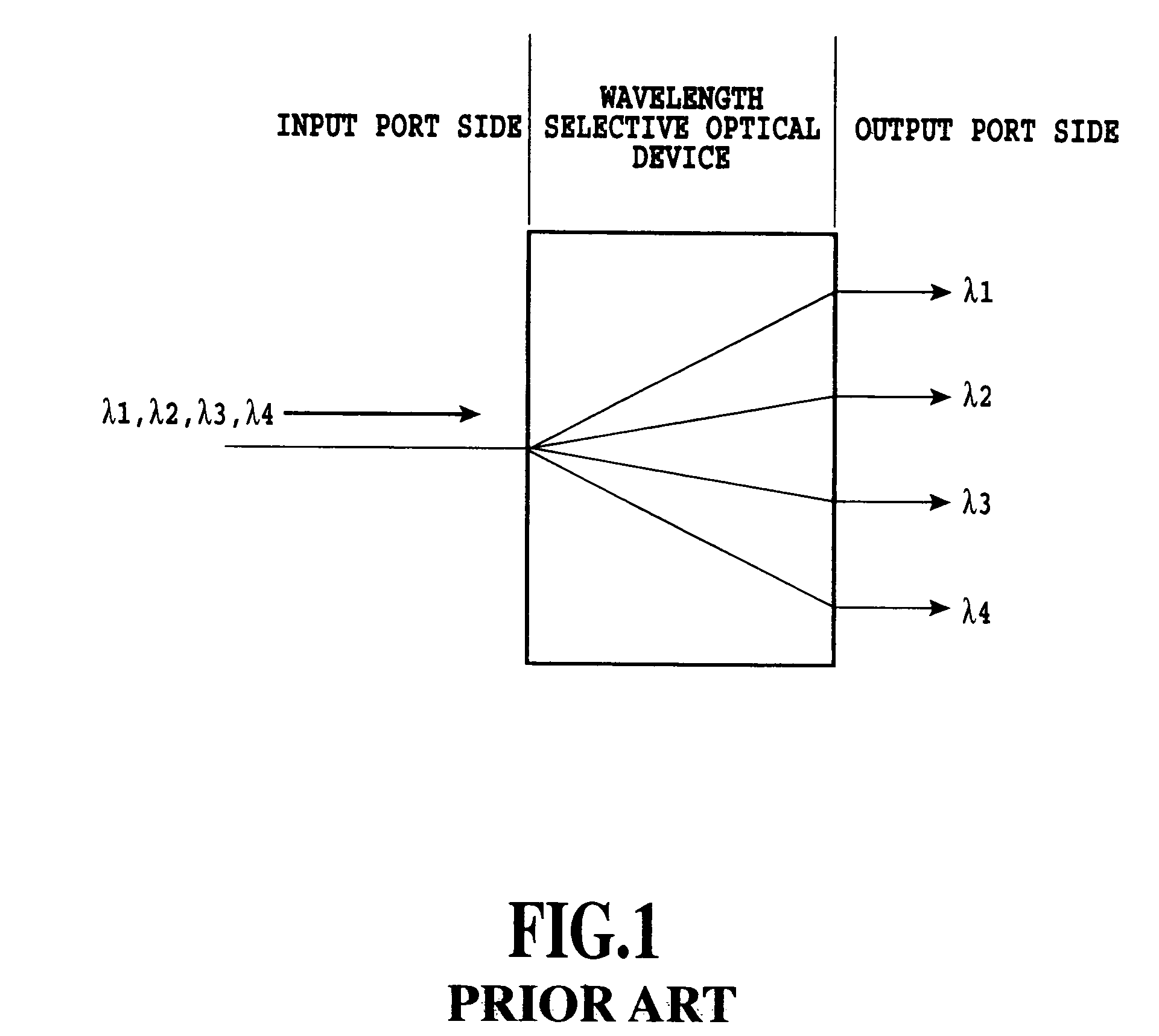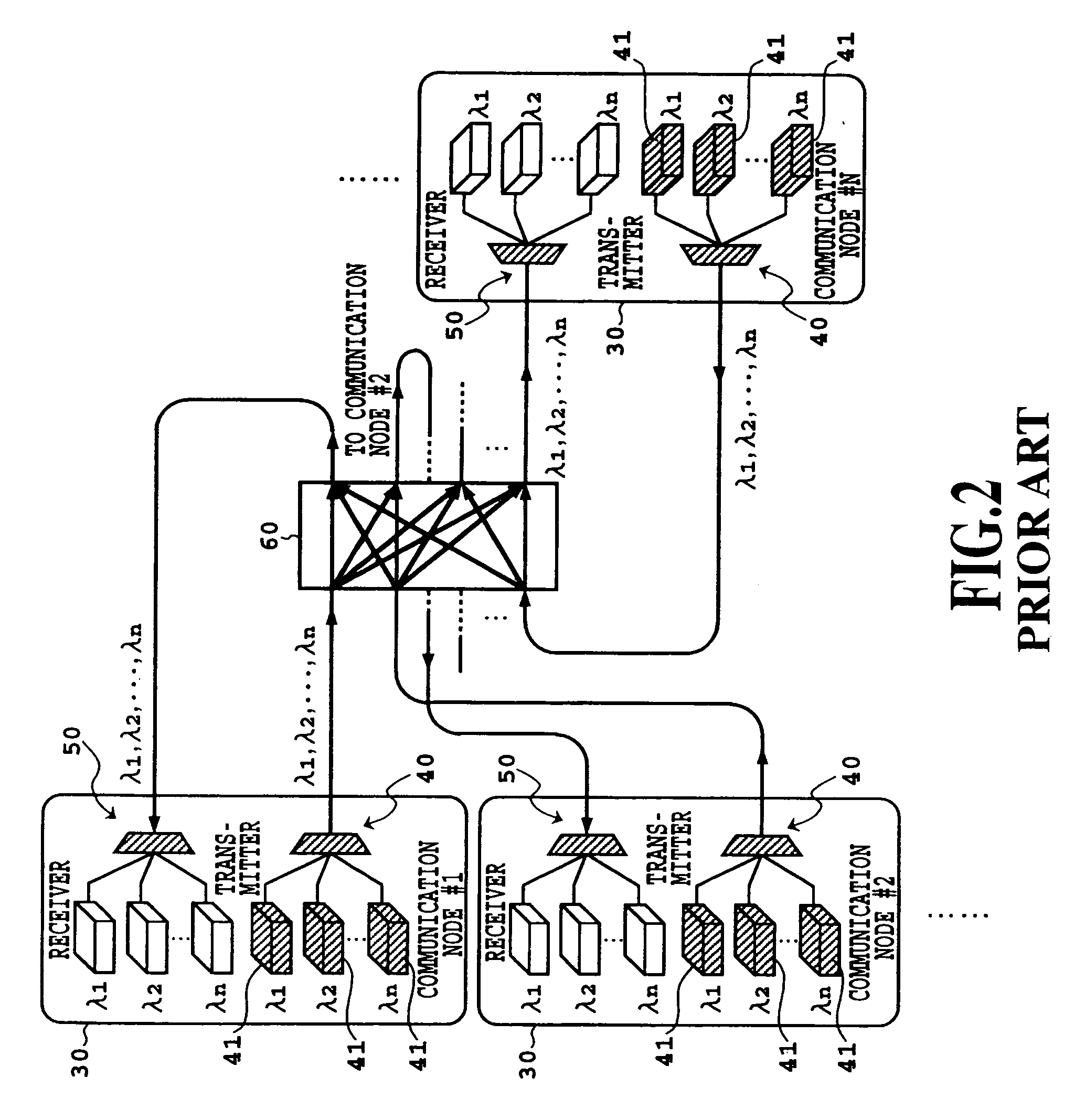Optical packet routing network system based on optical label switching technique
a network system and optical label technology, applied in data switching networks, multiplex communication, transmission monitoring, etc., can solve the problems of increasing the size and cost of communication nodes, increasing the burden of electrical routing processes, and reducing so as to reduce the load of electrical processing, reduce the burden of electrical processing, and simplify the system
- Summary
- Abstract
- Description
- Claims
- Application Information
AI Technical Summary
Benefits of technology
Problems solved by technology
Method used
Image
Examples
first embodiment
of the First Embodiment
[0107] Next, the composition example 2 of the first embodiment of the present invention will be explained referring to FIG. 9. The parts of this composition shared to those of the basic composition shown in FIGS. 7 and 8 are given shared numerals and symbols and the explanation thereof are omitted here.
[0108] This example is a variation of the basic composition shown in FIG. 8. In the case of the multi-wavelength optical source equipment 70 shown in the FIG. 8, the outputs ports of the optical splitter 9 for branching the optical signal passing the second optical path 23 to a plurality of optical paths are respectively connected to the optical gates 6.
[0109] In contrast, in the case of the present embodiment, as shown in FIG. 9, wavelength converters 20a-20d, having optical gate function respectively, are respectively connected between each pair of the wavelength multiplexer 11 and the wavelength multiplexer 12, located respectively in the stage following the ...
example 4
[0121] [Composition Example 4 of the First Embodiment]
[0122] Next, the composition example 4 of the first embodiment of the present invention will be explained referring to FIG. 12. The parts shared to those of the previous example are given shared numerals and symbols and the explanation thereof is omitted.
[0123] This example is a variation of the basic composition shown in FIG. 8. That is, the multi-wavelength optical source equipment 70 incorporates the cyclic-wavelength arrayed-waveguide grating 60 as an optical component having the wavelength routing function.
[0124] In the cases of various composition examples including the first embodiment of the present example, the cyclic-wavelength arrayed-waveguide grating 60 is employed as an optical component having the wavelength routing function, but the components other than this component may be used as long as the latter have the functions equivalent to that of the former.
[0125] Composition Example 5 of the First Embodiment
[0126] Ne...
example 6
[0136] [Composition Example 6 of the First Embodiment]
[0137] Next, the composition example 6 of the first embodiment of the present invention will be explained referring to FIG. 14. The parts shared to those of the preceding example are given shared numerals and the symbols and the explanation thereof are omitted.
[0138] This example is a variation of the composition example 5. To be specific, the multi-wavelength optical source equipment 70 incorporates the wavelength demultiplexer 31 for separating the principal optical signal and the optical signal for control differing in wavelength from the principal optical signal and the cyclic-wavelength arrayed-waveguide grating 60 as an optical component having the wavelength routing function.
[0139] The cyclic-wavelength arrayed-waveguide grating 60 is employed as an optical component having the wavelength routing function, but any other component having the equivalent function may also be employed as a substitute.
PUM
 Login to View More
Login to View More Abstract
Description
Claims
Application Information
 Login to View More
Login to View More - R&D
- Intellectual Property
- Life Sciences
- Materials
- Tech Scout
- Unparalleled Data Quality
- Higher Quality Content
- 60% Fewer Hallucinations
Browse by: Latest US Patents, China's latest patents, Technical Efficacy Thesaurus, Application Domain, Technology Topic, Popular Technical Reports.
© 2025 PatSnap. All rights reserved.Legal|Privacy policy|Modern Slavery Act Transparency Statement|Sitemap|About US| Contact US: help@patsnap.com



